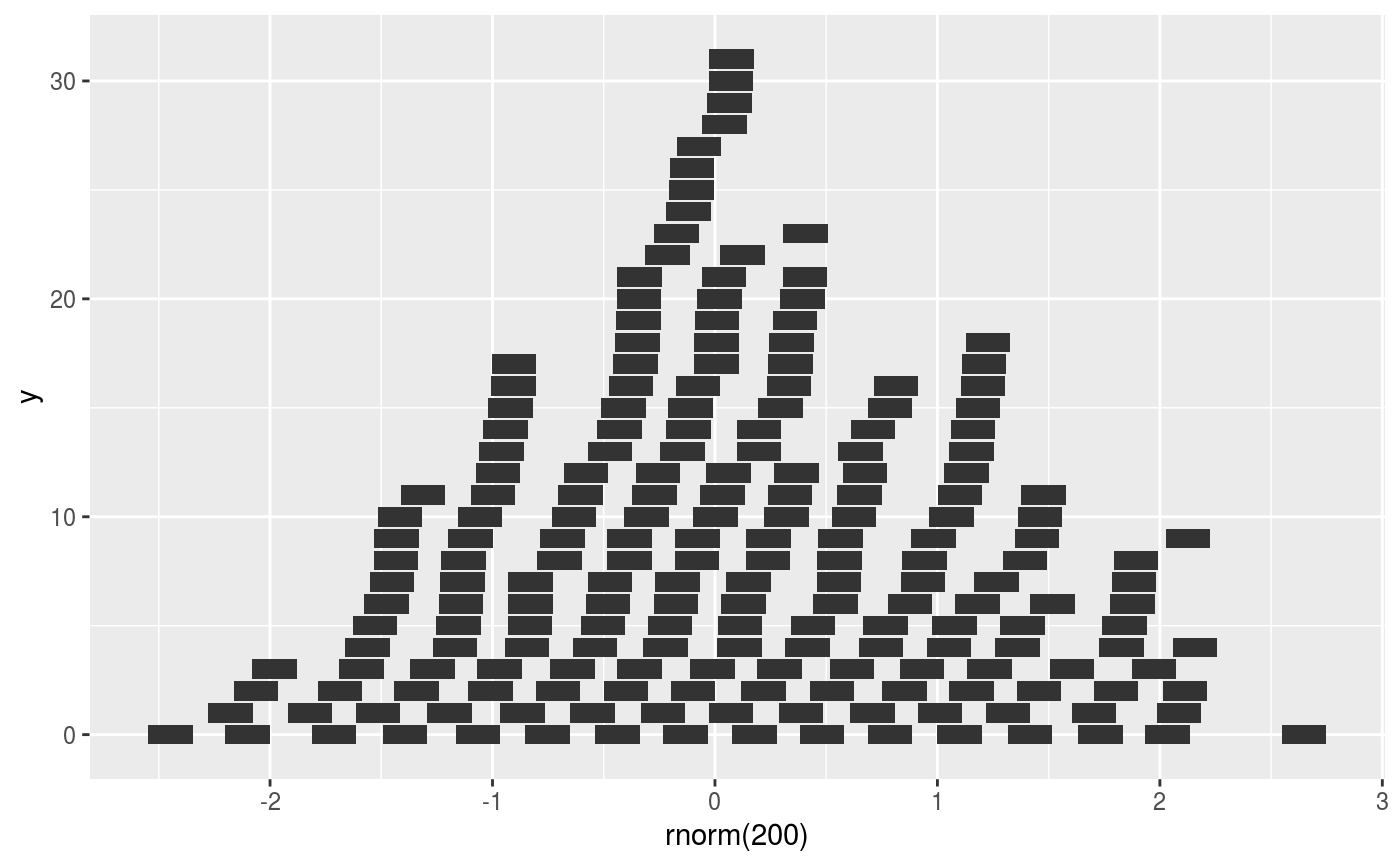One-dimensional ranged data in the x-direction is segregated in the y-direction such that no overlap in twodimensional space occurs. This positioning works best when no relevant information is plotted in the y-direction.
position_disjoint_ranges(extend = 1, stepsize = 1, dir = NULL)
Arguments
| extend | a |
|---|---|
| stepsize | a |
| dir | A |
Value
A Position ggproto object.
Details
An object is considered disjoint from a second object when the range
between their xmin and xmax coordinates don't overlap.
Objects that overlap are assigned to different bins in the y-direction,
whereby lower bins are filled first. This way, information in the
x-direction is preserved and different objects can be discerned.
Note that this positioning is only particularly useful when y-coordinates
do not encode relevant information. Geoms that pair well with this
positioning are geom_rect,
geom_tile.
This positioning function was inspired by the disjointBins()
function in the IRanges package, but has been written such that it
accepts any numeric input next to solely integer input.
See also
Examples
# Even though geom_tile() is parametrised by middle-x values, it is # internally converted to xmin, xmax, ymin, ymax parametrisation so the # positioning still works. ggplot() + geom_tile(aes(x = rnorm(200), y = 0), width = 0.2, height = 0.9, position = position_disjoint_ranges(extend = 0.1))
